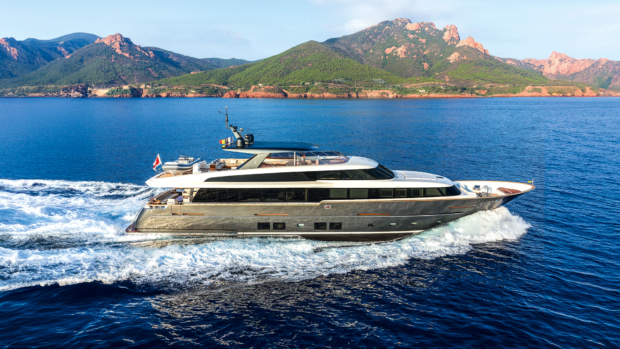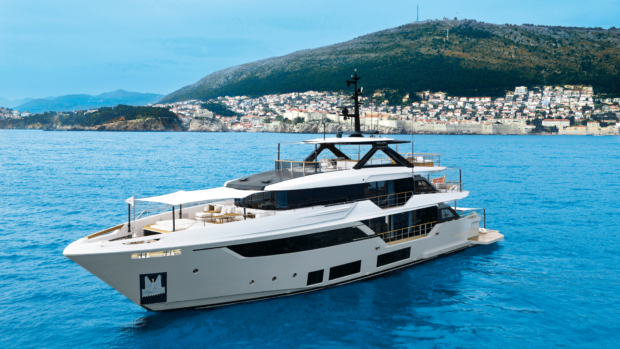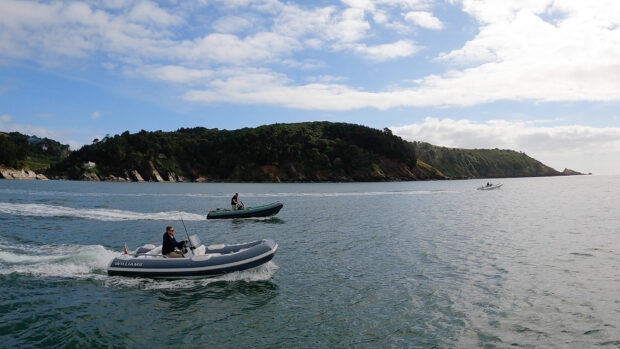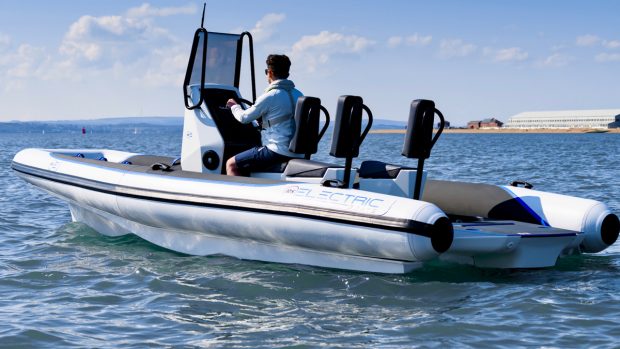After an adventurous journey, including a hospital dash, the crew of Egret gets into party mode
Position: S15 56.28 W173 46.07, Neiafu Harbour, Vava’u, Kingdom of Tonga
Scott (YT) and Mary Flanders (MS) left Gibraltar on 16 September 2006, and we’ll be following their journey every step of the way, thanks to this unique online “blog”. For a complete list of all the couple’s blog entries click here
After an adventurous journey, including a hospital dash, the crew ofEgretgets into party mode
Well, mis amigos, a lot has happened in the past few days. We spent our last few days in New Potatoes socialising and touring the village with a group of 10 yachties in a hired truck. We also climbed the highest hill, which overlooked the island and the reefs and villages. It was beautiful.
Medical drama
It was during one of these days, when it was windy with a large gale force storm down south and east, that a plea came over the VHF from the local hospital for someone to take a patient to Neiafu, Vava’u (Vav ow), the large island group 170nm to the south. The airline wasn’t flying and it was too expensive to hire a plane for the trip. A smallish Dutch sloop volunteered to give it a go and it was then that it realised the patient came with a nurse, a wife, two small children and a father. After loading the gang on board they set off. The entire anchorage was watching and cheering. However, good intentions don’t make for good sailing. After struggling to clear the harbour entrance in large seas the sloop’s triple-reefed mainsail blew out within minutes and they were forced to return and offload their very sick passengers.
We had been following the weather for departure with OMNI Bob and there seemed to be a break in two days time on the Thursday. The patient had a gastronomical blockage of some type and really needed to get to a proper facility and be treated. Coordinating leaving with the health minister,Egretand N55New Paigevolunteered to take them to Neiafu when there was a lull in the weather.New Paige, being the faster of the two boats, was to take the patient and nurse andEgretwas to take the family. We loaded Lucia (the wife), Rodney (3), George (18 months) and Sheffield (father in law) on Wednesday evening to be able to leave at first light on Thursday. Prior to their coming aboard Mary prepared the boat for what we felt was going to be four seasick passengers. We gave them our midships stateroom so they could have the most comfortable ride in the boat. Wisely Mary took the precaution to put a waterproof layer underneath the sheets.
Lucia is the village dental hygienist and her husband (the patient) is the village jail warden (they have four offenders in house). Both are here on a three-year tour from the Tongan capitol of Nuku’alofa (Nuke ah loaf ah). Lucia speaks good English, as do most educated Tongans but Sheffield spoke as much English as we did Tongan, although he did understand a few words of English, such as when I held up a cold beer and said “beer?” he would smile, nod his head and say “yes”. Yup, the universal language.
New Paigewas to load their passengers at first light on Thursday. The threeNew Paigecrew had worked all day on the bottom of their boat, cleaning the American Samoan growth off to give them a much faster trip. They also gave up their midships berth. In the end the patient slept on the floor with the nurse in bed and a continuous IV swinging overhead. TheNew Paigecrew slept in the cabin behind the pilothouse.
The wind died as predicted on Wednesday evening but around midnight it started puffing again. I fired up the laptop to check OMNI Bob’s weather and he had amended his earlier prediction, saying things had changed. Bob offers a great service as he continuously monitors the weather, even after sending his daily report.
Unfortunately things were not going to be pleasant, not dangerous but sloppy. There is a big difference between 2m seas with good spacing and 3.5m (11ft) seas and tighter spacing.
Day of reckoning
At daybreak TK (anchor) came up. Mary put our ‘at sea’ short chain snubber on and cleared the foredeck. We had lifted the dink the night before so off we went. Our guests were in the saloon looking a little apprehensive but trying to be brave. It was nearing high tide so there was an extra margin of water depth safety clearing the pass. Off to the right side of the pass giant surf was crashing on the reef finger extending offshore and white foam was covering the entrance. The entrance was relatively calm so we didn’t see any problem and there wasn’t any problem, except for the depth finder trying to read through the water and sounding the shallow depth alarm. Once we cleared the pass I came down from the flybridge and started slowly making our turn to the south west to clear the offshore reefs at the southern end of the island. By taking the inside, leeward route we added a couple of miles to the trip but this was better than driving through the waves, which were now stacking up in the shallow water as they approached the windward reefs. Once we turned downsea there were big smiles from our passengers. Little did they know that when we made our turn to just a little east of due south things would change. And change they did.
When you near an island the offshore seaway is disrupted by wave compression, wind and wave wrap, current acceleration, tides and a number of other factors lumped together under ‘island effect’. In high winds most of these changed conditions usually occur at once. At one point we were doing 8.4 knots riding downhill in relatively low seas. But as we cleared the offshore reefs we got wave wrap coming from around the reefs, high, tight seas and an opposing current. We went from a high of 8.4 knots to 5.5 knots in a sloppy sea. Our guests were brave but horizontal.
And so it went for a while until we cleared the island and got into deeper water with the interrupted ESE wave set. The waves were just forward of the beam, quite high with some wind chop on top of the swells. We were running at 1600rpm, not our usual fuel stretching 1350rpm, trying to keep more water flow past the keel, rudder and stabiliser fins. We had the Naiad Multi Sea II cranked up to the 2/3’d mark, and the ride was as good as it could be.
Back to New Paige
New Paigeleft an hour afterEgret. By this time the tide had swung and waves, very big waves, were breaking across the pass. The patient and nurse were fortunately down in the midships stateroom, while Roger and Joan ofNew Paigewere in the flybridge and their daughter (Kimberly, 10) was in the pilothouse.New Paigehas a high bow as well as a higher than standard custom bow rail. The first wave broke over the bow and rail, rocketed across the deck to the Portuguese bridge and shot straight into the flybridge. Both Roger and Joan got blasted but the problem is, it’s never that easy or just one wave. The next wave was just as big and broke on the bow, which was now downfacing and they got blasted again. Luckily, Kimberley saw the waves coming and laid horizontal on the pilothouse floor. After those two waves the rest diminished and finally they were able to make the turn, putting the waves on the stern…for a while. For the rest of the time it was a good ride turning to slop.
Watch out for whales
Let’s not forget the whales. After clearing the breaking waves from the surfNew Paigeran into two whales just in front of the boat. Roger slowed and turned ending the first encounter. NextNew Paigehad a whale rise just in front of the boat so they had to go into neutral and bump reverse. Their Trac stabilisers automatically locked the fins in the centre, making for 2-3 minutes of uncomfortable roll until Roger figured the deal out.
None of us wanted to find out what would happen if you hit a whale at speed, although we had a bit of VHF chatter about Moby Dick popping a hole in their Roger and Joan’s white fibreglass ship andEgretcoming to the rescue.New Paige’sTongan passengers were not concerned with our chatter. They felt it was their duty to lay as still and horizontal as possible. All kidding aside it was horrible for them as landlubbers going to sea in conditions as these and our guests were not doing any better.
The weather continued until dark when we had a slight lessening in the wind/waves. At 2am we got a second and major reduction in wind/waves, so from there on in the trip was relatively comfortable.
One interesting comparison was the different degrees of roll we experienced.Egrethad a few 40 degree rolls, with 30 degrees being regular for the first hours until dark, however,New Paige’srolls never exceeded 22 degrees. Mary and I spent the entire trip together on the pilothouse settee (Egretdoesn’t have a captain’s chair) and well supported. Our rolls weren’t bad, even at 40 degrees. However, it wasn’t the larger waves that would send us over – riding over the large waves we would just go up and down with a bit of roll as they washed under the boat from the beam. It was the small powerful waves that would break against the port side and trip the boat over the wave on the opposite side. With our forward speed and stabilisers up high the roll only lasted a few seconds.
Mary and I took turns on watch and sleeping, both scrunched on the pilothouse settee. OnNew Paige, Joan was a bit under the weather so Roger did yeoman chores of standing watch most of the night by himself. At daybreak we could see how the seas had laid down and the ride was more comfortable.
A few hours after daylightEgret’screw came back to life, but somewhat lighter and still groggy. The kids were well behaved; even at the worst times there was just a little soft crying.
By the time we reached the lee of Vava’u’s entrance everyone was up and chattering away. The trip’s end and land were in sight. Roger was a half hour ahead of us and called for the contact to meet us at the dock with an ambulance. The contact never answered the call but a local American ex-pat restaurant owner (Aquarium) answered and metNew Paigewith their dink and took the nurse and patient away to the dock and a taxi ride to the hospital. We docked at the harbour’s commercial wharf and offloaded our crew. Lucia was so taken by it all she couldn’t speak. By the time both boats reached customs the coconut telegraph had let the customs officials know of our bringing the family from New Potatoes. I don’t think two boats had ever had a more welcoming clearance into the harbour. We were thanked over and over again by the officials.
Saturday 6 September
Leaving out arrival day (Friday) night’s social whirl we’ll fast forward to Saturday morning. We met theNew Paigecrew for breakfast at the Aquarium restaurant then walked to the hospital to see how the patient was doing. He (Cecil – Saysel) had already been flown to Nuku’alofa, the Tongan capital, further south in another island group. Again the nurses thanked us profusely for taking care of the locals. Later in the afternoon we met another cruiser who’d checked into Vava’u customs afterEgretandNew Paigewas literally in tears when she told her story about how the officials passed on their thanks to all the yachties who take such good care of the islanders. The yachties add quite a lot to the economy of this small country, as well as isolated incidents of personal help.
Another story to pass along those lines is about a young couple that live here, where the wife is a veterinarian. She has been spaying dogs and cats for free in the islands they visit ¬- here for example, she spayed one of the custom official’s dog.
And we’ll leave you with this parting shot at the Moorea (French Polynesia) anchor killjoy who somehow made it this far. The dim guy dingyed up toEgretjust after we backed down on the anchor to let us know he didn’t want to listen to our generator run all night. Unusually for me (in a challenging moment like this) I was kind and said that we were only anchoring for a few hours so we could clean the bottom and that we would soon be moving on. The idiot sat at a table near us last night and just stared at us, trying to put together who we were. You could see the tiny wheels turning. Teeny tiny Neanderthal wheels.
So here we are and here we’ll sit for a while, as we say in fishing, you don’t leave fish to find fish. This place is great and we’re surrounded by boatloads of friends. There are three other Ushuaia boats here as well. On Monday night it is a Deep South alumnus fish fry aboardEgret. There are more than 50 individual anchorages within just a few mile radius of the harbour. We already know where the three fishing FADs (fish attractant devices) are located offshore. An offshore fishing trip is in the planning stages.
Last night there was a party ashore, tonight there is another and tomorrow we rest and wash the boat, Monday night is the fish fry, and we have been here just one day. The rough passage is history. Life is good for theEgretcrew. Ciao.
Picture 1:Egretcrew minus grandpa
Picture 2: Patient (Cecil) inNew Paige’sstateroom. Note the IV bottle hanging from the portlight holder to the left.









